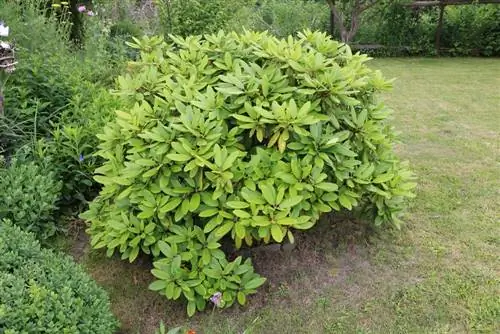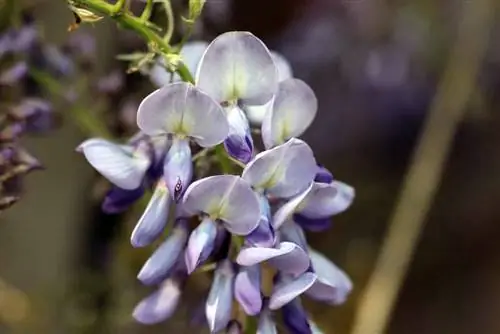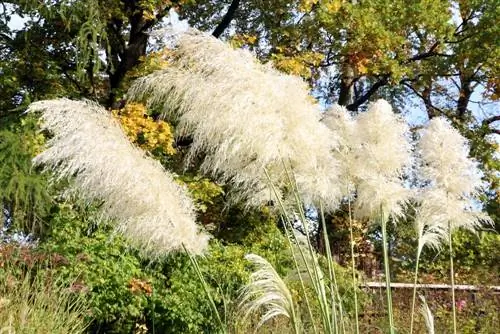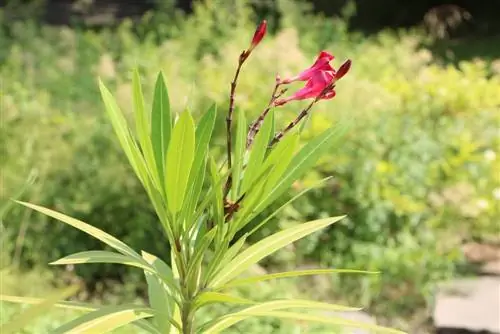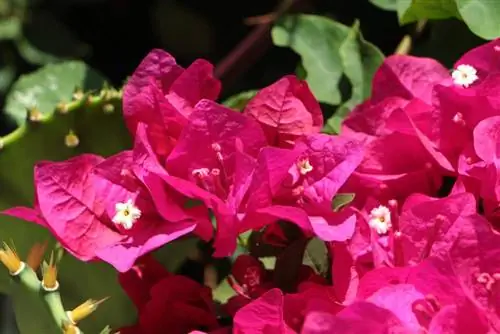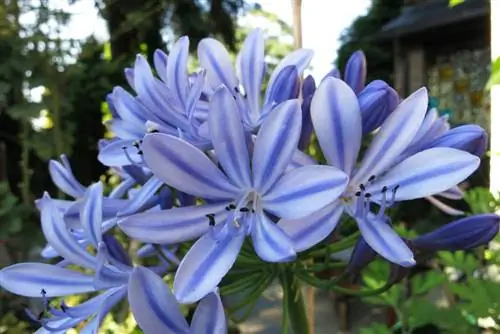- Author admin [email protected].
- Public 2023-12-17 03:39.
- Last modified 2025-01-24 12:45.
Decorative, magnificent and easy to care for - rhododendrons are now one of the most popular plants that grow in your home's green space. The plant, which, depending on the variety, is native to almost all over the world, is characterized above all by its lush flowers - which is particularly noticeable when the rhododendron stops blooming. However, there can be very different causes for the lazy flowering of rhododendrons.
Determine the cause of the flowering laziness
In order to specifically help the plant develop flowers, the cause of the lazy flowering must first be determined. Care errors are often to blame; In some cases, location problems or pests can also be the cause of difficulties in flower formation. Overall, the following causes can be identified for this phenomenon:
- 1. Inappropriate location
- 2. inappropriate substrate
- 3. unfavorable nutrient distribution
- 4. Pruning at the wrong time
- 5. Pest infestation
- 6. unfavorable weather influences
In order to be able to clearly determine the reason why the rhododendron is not blooming, the hobby gardener must know about the symptoms and circumstances that the individual causes bring with them in addition to the lazy flowering.
Location
Most hobby gardeners are aware that the rhododendron is a forest plant - and choose appropriately shady areas within the local green space as a location. But if the plant is placed in deep shade, flowering is usually severely limited or even stopped altogether, while the plant as a whole continues to grow. In particular, leaf formation is particularly pronounced when the rhododendron is in an unfavorable location because the leaves ensure that as much sunlight as possible is captured. The hobby gardener should first look at the position of the plant and its leaf formation.
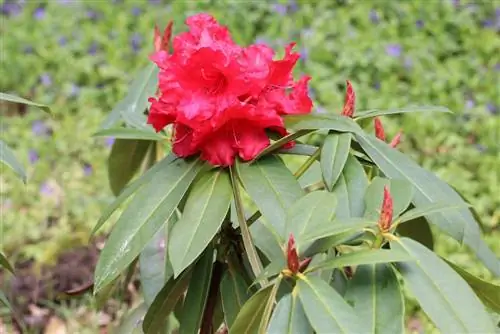
If it finally turns out that the wrong location is actually the cause of the lack of flowering, you should immediately look for a brighter place. It is important that the rhododendron receives at least a few hours of direct sunlight in the morning and evening. The plant will bloom even more happily if light shading is guaranteed all day long - for example from trees with a sparse crown. In this context, the local Scots pine has proven to be an ideal source of shade. In addition, the hobby gardener can ensure greater incidence of light by cutting back the plant and thinning out the crown.
Floor
If the rhododendron does not bloom, the choice of an unsuitable substrate can also be the trigger. Under natural conditions, the plant is accustomed to soils with the following characteristics:
- pure humus soil
- thick layer of raw humus on the topsoil
- Raw humus consists of weakly decomposed leaves
- mineral subsoil
- Plant roots are barely attached to the subsoil
If the rhododendron was cultivated in a substrate that only has a low humus content, this can also affect flowering activity; The entire plant must be looked at again. Plants that fail to bloom due to the wrong substrate grow as a whole - but very slowly. In addition, they only produce sparse foliage. Despite a low proportion of humus in the soil, the rhododendron still copes quite well with a sandy substrate; However, if there is a cohesive clay soil or loess soil, the symptoms mentioned become more obvious. The sensitive roots of the rhododendron are then unable to penetrate the fine-pored soil; they suffocate.
If you have identified a substrate with an unfavorable composition as the cause of the rhododendron's lazy flowering, you should either offer the plant a more favorable location with humus-rich soil or enrich the substrate. To do this, the rhododendron must first be planted out and then buried in the ground again.
Tip:
If the rhododendron is replanted and no flowers form afterwards, this is probably due to a stress reaction that the transplanting brings with it. Then you just have to wait and see, because the plant will most likely bloom again the following year.
Nutrient supply
If the rhododendron is in a suitable place and the soil also contains sufficient humus, an incorrect supply of nutrients to the plant can also be responsible for a lack of flowering, for example:
- too large amounts of fertilizer
- insufficient amounts of fertilizer
- the wrong composition of the fertilizer
Especially if too much fertilizer has been used or the components of the nutrient mixture are not adapted to the special needs of the rhododendron, the plant can quickly become lazy in flowering. The hobby gardener can also recognize the fertilizer problem because the plant looks he althy overall and is growing very well; Then fertilization was usually carried out on one side with a mineral nitrogen fertilizer, which promotes the vegetative growth of the rhododendron and at the same time inhibits flower formation. The same effect can occur if the phosphate content in the fertilizer is too low - and if other important substances are missing at the same time, for example potassium.
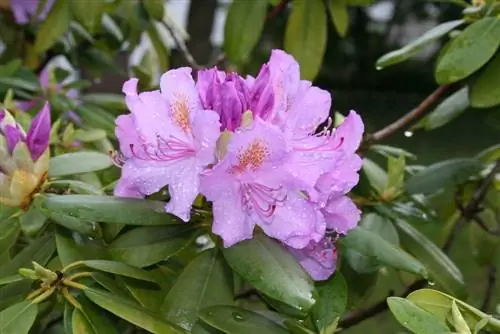
The most important thing is the optimal ratio between potassium, phosphate and nitrogen. Special rhododendron fertilizers are tailored to the needs of the plant and are also available in long-term versions; Those who use such products provide their plants with the right care and stimulate them to produce flowers again. Hobby gardeners who pay attention to organic gardening turn to organic solutions. If there are enough phosphate and potassium in the soil, it may also be sufficient to fertilize the rhododendron with horn shavings.
Tip:
If the nutrient supply can no longer be determined, it can be useful to carry out a soil test.
Cutting
If the rhododendron does not bloom, this may also be due to pruning that the hobby gardener may have carried out at the wrong time. Please note when pruning:
- Rhododendrons produce their flowers the previous year.
- This process is initiated immediately after the end of the flowering season.
- The scissors should be used when the withered parts are just being removed.
Many hobby gardeners do not cut the rhododendron directly after flowering, but in spring - together with shrubs and trees. However, most of the flowers are then removed at the same time. In order to avoid a lack of flowering due to incorrect pruning timing, the hobby gardener should use the scissors between July and November. An exception are late-flowering varieties, such as Cunninghams White, which can still be cut back in spring.
Pests and diseases
Last but not least, pests or diseases can be the reason why the rhododendron does not bloom. However, in this case the plant also shows other symptoms that can clearly identify an infestation. The dreaded rhododendron cicada, for example, presents the following damage:
- gray-black discoloration of the flower buds over the course of the summer
- Drying of the flower buds
- Formation of a thin, mold-like, black coating
- Buds are eventually killed
The pest lays its eggs in the bud scales of the plant over the course of its summer; The bud is then infected at the puncture site. Once the rhododendron is infected, control is difficult. The affected buds must be removed immediately and then disposed of with household waste. The pests can be controlled with suitable insecticides until the end of May. The large-flowered hybrids are particularly susceptible to the rhododendron cicada - although there are large differences depending on the variety. Considered insensitive:
- ‘Gold Bouquet’
- ‘Berlin Love’
- ‘Le Progres’
- Yakushimanum hybrids
Weather conditions
Finally, there is one reason for the rhododendron's lazy flowering that even the most experienced hobby gardener cannot do anything about; these are unfavorable weather conditions. In recent years there have been more and more persistent increases in temperature in our latitudes, which have presented themselves, for example, as unusually mild winters. If it is too warm for a long period of time during the cold season, the rhododendron buds open prematurely - which can then result in them freezing before they bloom. Then the only thing that helps is to hope for the following year.
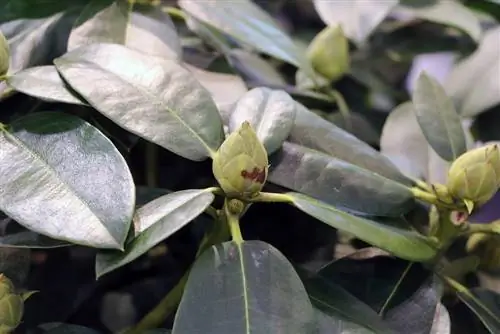
Overall, however, it turns out that most of the causes of rhododendron flowering can be influenced; Then it is important to find out exactly which care errors led to limited flowering - in order to correct them as quickly as possible. Anyone who pays attention to their plant and deals with it thoroughly will quickly find the cause - and will soon be able to enjoy many beautiful flowers on the rhododendron again.

